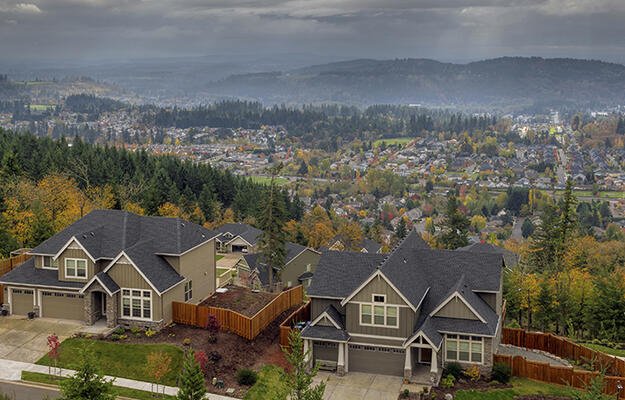
(shironosov/iStock)
Designing Accessible Housing for People with Disabilities
In the US, about one in four adults has some type of disability, yet it’s estimated that less than 6 percent of the national housing supply is designed to be accessible.
According to the Urban Institute, more than 18 million people with disabilities are eligible for federal housing assistance but aren’t receiving it, meaning they face significant economic barriers to stable, quality housing that is affordable, accessible, and inclusive of their needs.
One solution holds immense promise: universal design. By embracing the principles of universal design, policymakers can create housing environments that are accessible for everyone.
What is universal design?
Universal design is a concept rooted in the belief that everyone should have equal access and opportunities in the built environment. Universal design goes beyond simply meeting accessibility requirements. It strives to create spaces that are inclusive and accommodating for people of all ages and abilities. The concept is based on seven principles that provide guidance for designing products, environments, and systems that are accessible, usable, and inclusive for all people.
- Equitable use: Ensure the design is useful and marketable to people with diverse abilities.
- Flexibility in use: Provide a range of options and choices that cater to a wide variety of user preferences and abilities.
- Simple and intuitive use: Create a design that is easy to understand and operate, regardless of the user’s experience, knowledge, language skills, or cognitive abilities.
- Perceptible information: Present information and feedback in multiple sensory modalities (visual, auditory, tactile) to accommodate users with different sensory abilities.
- Tolerance for error: Design in a way that minimizes hazards and adverse consequences of accidental or unintended actions.
- Low physical effort: Minimize the physical effort required to use the product or environment. Consider the needs of people with limited strength, mobility, or dexterity.
- Size and space for approach and use: Provide adequate space and clearances to ensure people can approach, reach, and interact with elements of the design comfortably and safely.
In terms of housing, these principles can be applied to various architectural elements that make for more-welcoming spaces. These could include wide doorways and hallways, zero-step entrances, accessible bathrooms and kitchens, adjustable countertops and shelving, lever-style door handles, and well-placed lighting.
How can policymakers apply universal design principles to meet residents’ housing needs?
Several federal laws outline minimum requirements for accessible design and construction, including the Americans with Disabilities Act of 1990 and Section 504 of the Rehabilitation Act of 1973. Though these laws have been monumental in protecting the rights and ensuring equal opportunities for people with disabilities, additional steps—including creating higher standards that align more closely with universal design principles—could help ensure disabled people of all income levels can live in accessible homes.
Local policymakers in some cities have started to build upon these principles through policies that require the construction of universally designed units.
A couple places have already taken steps:
- In 2017, the city of Alameda, California, (PDF) implemented an ordinance that made it mandatory for all new housing construction to incorporate universal design elements. Following in Alameda’s footsteps, Oakland has now set a target to embrace a similar policy within the coming years. The city’s Housing Element (PDF), a comprehensive eight-year policy plan mandated by the state, outlines the city’s commitment to initiate a community engagement process. This process aims to explore the possibility of enacting a universal design law by 2027.
- Most recently, Prince George’s County in Maryland has proposed its own universal design bill that would require elements of universal design for future housing in Prince George’s County after January 1, 2026.
Local governments can consider offering financial incentives or subsidies to developers who include affordable universal design features in their housing projects. These incentives can take the form of grants, tax breaks, or reduced permit fees, making it more economically feasible for developers to incorporate accessible design elements.
While new developments that incorporate universal design principles are essential, applying these principles to the existing housing stock is equally important. Municipalities can incentivize retrofits that incorporate universal design principles through financial incentives, grants, or low-interest loans. They can also enforce zoning codes to boost accessibility upgrades in existing buildings for safer, more inclusive communities. Investing in existing housing properties not only fosters accessibility but also contributes to the preservation of neighborhoods.
Universal design could revolutionize how we think about housing for people with disabilities. To develop effective policies and advance research on universal design in housing, it’s essential to center the experiences and voices of people with disabilities. By advocating for universal design and pushing for policy changes, local policymakers can pave the way for a future where accessible, inclusive housing becomes the norm, enhancing the lives of people with disabilities and creating truly inclusive communities.


